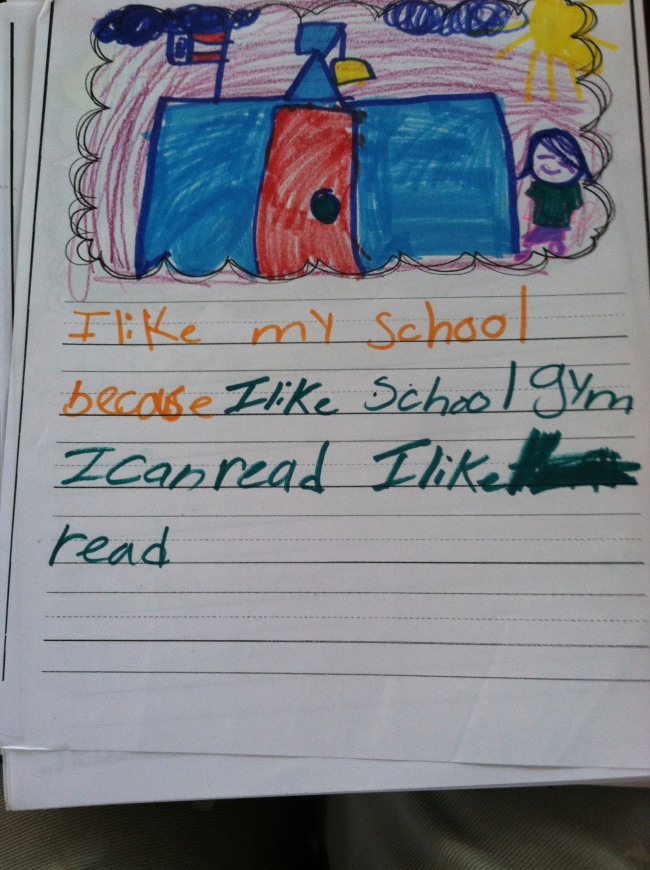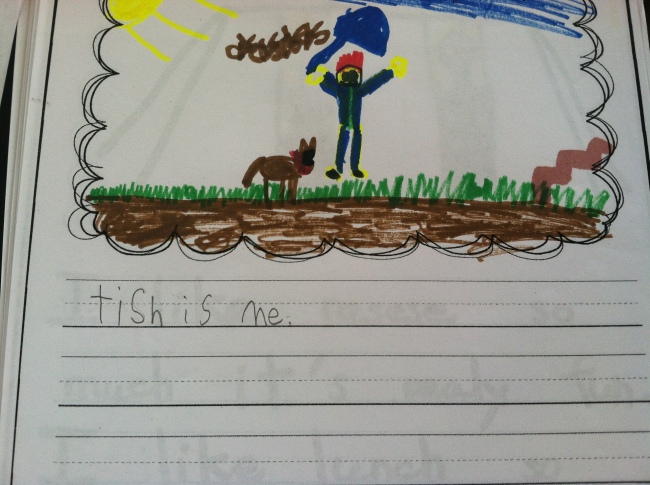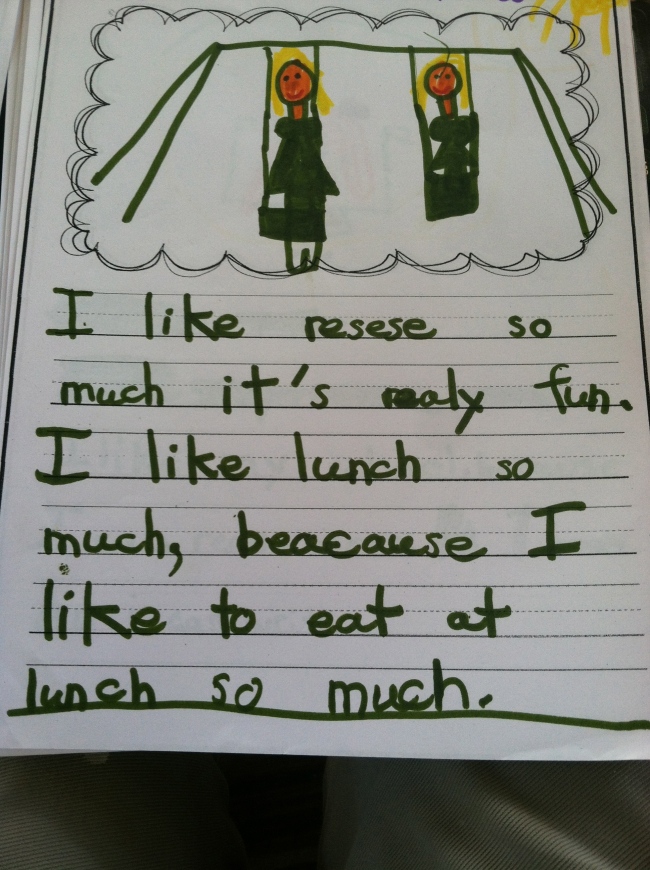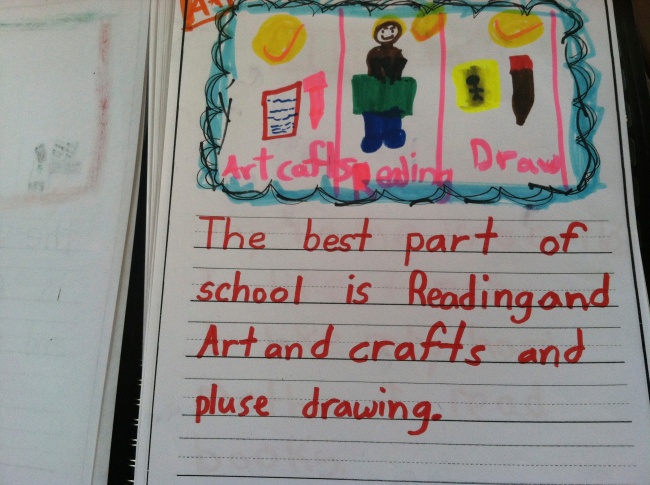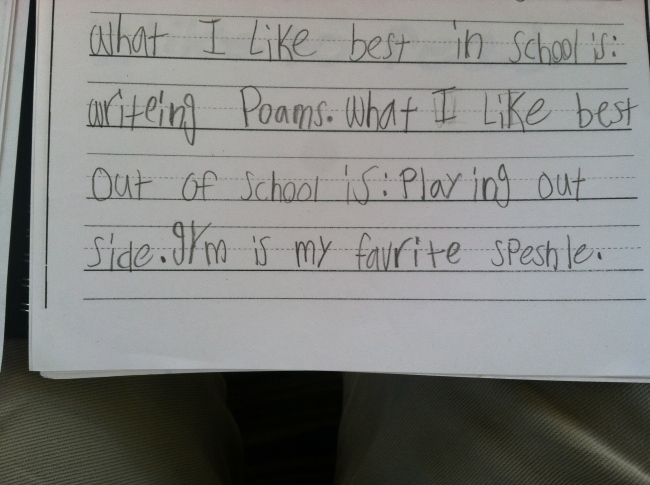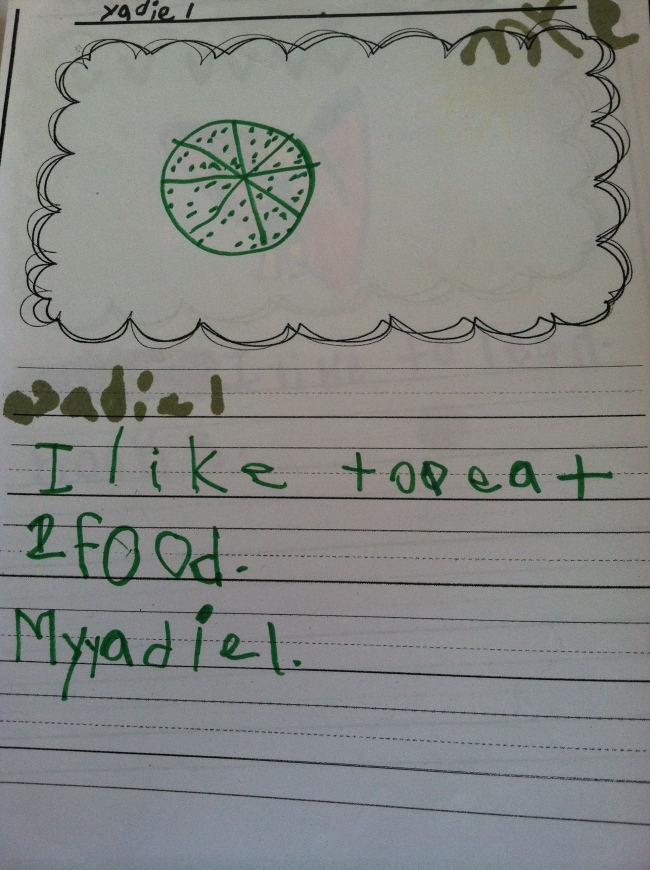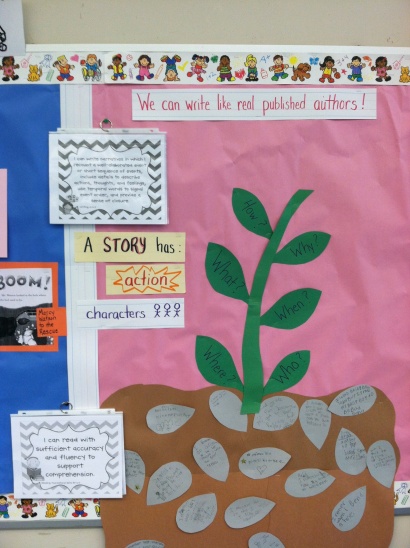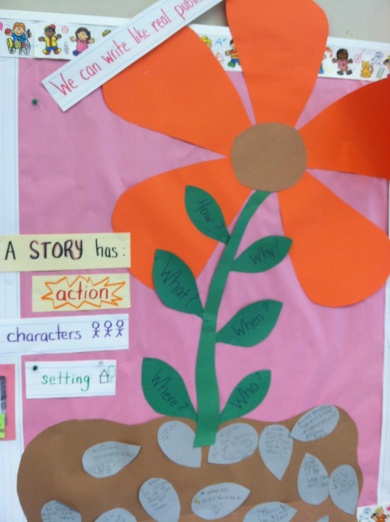For many teachers, vacation weeks are a time to catch up on professional reading and to plan upcoming units of study. Having just jumped into this new job, I have double the work (or so it seems). During this vacation, I have been focusing on the Literacy block, since reading and writing and language is what I love most. Later today (or maybe tomorrow), I’ll begin to look at Math.
For literacy, we use the Daily 5, Interactive Read Aloud, and Writers’ Workshop. Before the break, my Literacy Coach arranged to have someone cover my classroom so we could sit for an hour and a half reviewing the district requirements and looking at the structure of my day. It was a great meeting. I now understand how to plan for groups, individual conferences, and independent reading. I am still uncertain about how best to incorporate Word Work for my diverse learners, but Readers’ and Writers’ Workshop both make sense to me.
In addition to the articles my coach gave me on teaching Character, I also read an article by Stephanie Jones, recently reposted on The Classroom Project’s blog, about recognizing poverty in literacy teaching. She looks at the pull between worlds that many of our young students struggle with as the sometimes messy reality of their lives is pointed out as wrong or deficient in many books. One example was a literacy-based lesson on bullying that had several students conflicted since many of the people they love would, by the lesson’s definition, be considered bullies. In another poignant example, she talked about students who were reluctant to write about family members during Writers’ Workshop because they were in jail.
These are my students. They have family members in jail, older siblings or cousins in gangs. They see fights, hear arguments, and watch animation of violent acts I would not allow my 12 year old to see. Their parents have different priorities than I do, they see the world through a different lens. Yet, they all want the best for their children.
I have to find a way, as their teacher, to validate their reality without compromising school rules and objectives. We do not want children to fight, but denying them the freedom to write about fights they have seen makes their reality invisible rather than one they can reflect on and make decisions about.
My big struggle is guns, so I was glad to see a title in Jones’ Works Cited list from J J Schneider, No blood, guns, or gays allowed: The silencing of the elementary writer. This will move high up on my reading list. After only a week and a half with them, I have seen my students bring up guns in may different ways: through hand gestures, made with blocks during recess, sketched in Writers’ Workshop notebooks. I know they see television and movies with guns and that they shoot with virtual guns in video games. It’s likely that many have seen real guns in their homes or while with extended family or friends. And many had watched news coverage of the Sandy Hook massacre. It is a part of their reality. It seems like it’s my job to give them the tools to think critically about the role of guns in our society. If I just narrow mindedly teach that guns are bad, I put students in the difficult position of choosing between school values and family reality. Instead, I need to find a way for them to use description, connect to characters, infer feelings, and make predictions based on the evidence. When they read and write, guns can be a prop in the story, like an alligator or a dump truck.
When the students were making holiday cards for the veterans in a local VA Hospital, I had a short conversation with a few about whether or not to draw guns. I said that these people were wounded or sick and had probably been in situations where they had to use their guns. Guns may have even been the thing that put them in the hospital. So, I suggested that they might like to see a picture that had no guns, because they might be sad about getting hurt. The boys I was talking with showed great empathy. Some invented some stories of how they thought a soldier may have been hurt, others talked about how they feel when they get hurt, but all agreed that what I said made sense and went on to draw different pictures.
I think my conversation worked because I didn’t say guns were bad. In fact, we talked about the big guns many soldiers carry and how they learn to use them in army training. More than half of the boys thought they would like to join the army and use those guns to protect America.
Still, later that same day, they were building guns with linking cubes at recess and acting out violent scenes from video games. They weren’t protecting any one, just aggressively attacking. They are second graders, after all, and the empathy shown in one instance may not appear in another.
I need to keep learning and reflecting about issues of poverty and violence in the classroom. I want to hold my students to the highest standards; to show them that I expect they can achieve great things. But, I need to find a way to do that while accepting their realities. They have to be able to see themselves in books and to have the freedom to write about their lives.
This will be an interesting balancing act.

